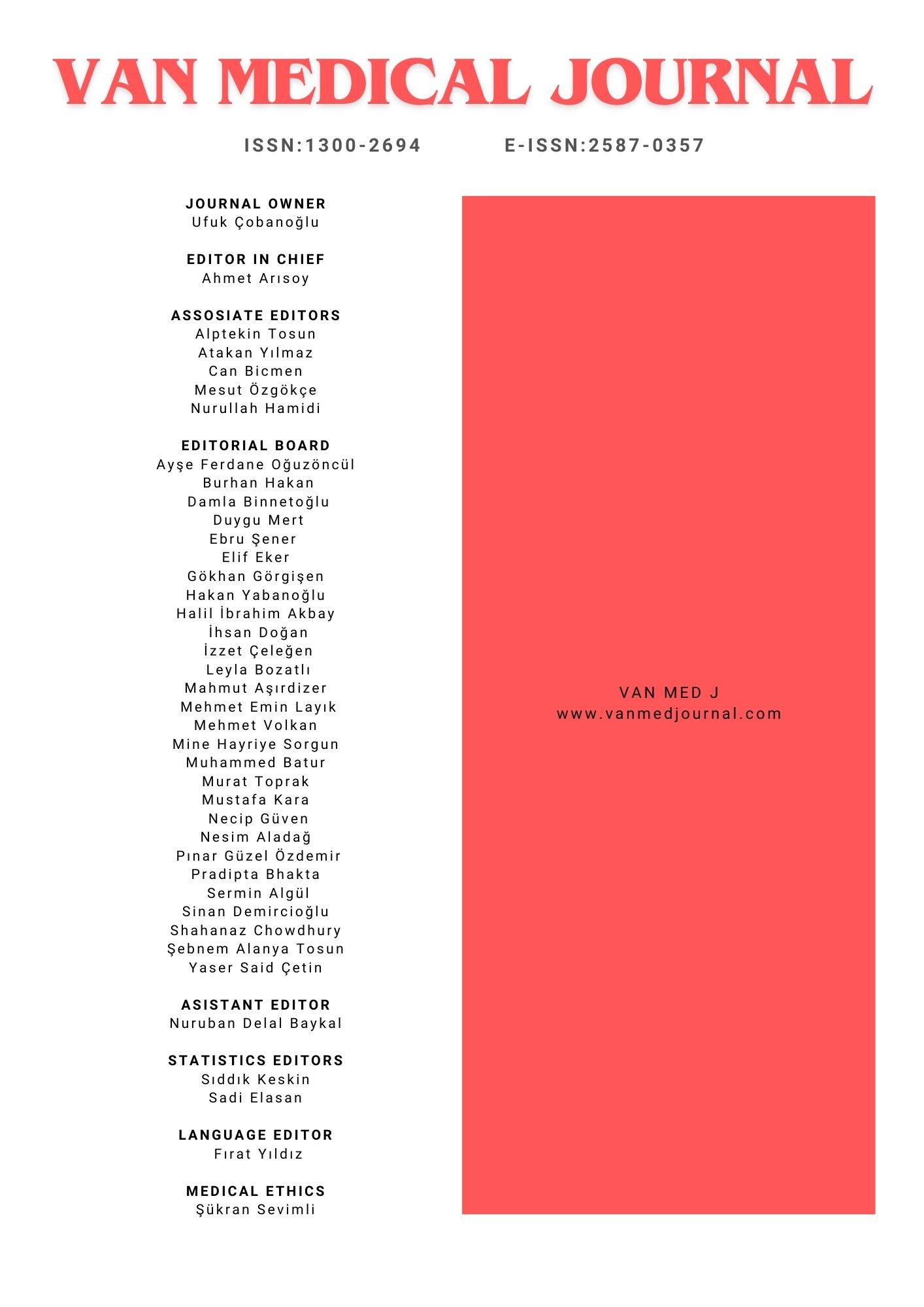Changes of Some Hematological Parameters Associated with Ascaris lumbricoides and Giardia intestinalis Infections
Hasan Yılmaz1, İmdat Dilek2, Yaşar Göz31Yüzüncü Yıl Üniv. Tıp Fak. Parazitoloji ABD, Van2Yüzüncü Yıl Üniv. Tıp Fak. İç Hastalıkları ABD, Van
3Yüzüncü Yıl Üniv. Sağlık Bilimleri Enstitüsü, Van
Hematological parameters including the counts of leukocyte, erythrocyte, thrombocyte and values of hemoglobin and hematocrit of blood taken from 64 people, who had parasites but healthy seemed, and living in Ercit, Van were studied. These subjects (PG) were infected by Ascaris lumbricoides (26 subjects), Giardia intestinalis (31 subjects) and both parasites (7 subjects). A control group (CG) of 30 healthy seemed persons also participated in the study. Two ml blood sample was drawn from each subject whose stool sample was taken. Thereafter, the blood smears were prepared using the blood taken from the tip of finger. The stool samples were evaluated using the methods of native-lugol, iron-hematoxylin staining, flotation and sedimentation for intestinal parasites. Blood count was carried out within 8 hours after drawing for the blood samples. WBC formula was calculated by means of blood smearing with giemsa staining. The values of leukocytes, thrombocyte, erythrocyte hematocrit and hemoglobin were examined. Erythrocyte indexes were investigated in people who had anemia. Besides, stool samples of subjects who had anemia were examined for stool blood. Whilst, in infected people by parasites (PG), anemia (23.4% vs. %6.6; p<0.05), eosinophilia (3.1% vs. %0; p<0.01) were significantly higher than the CG, thrombocyte, total leukocyte, neutrophile, monocyte, lymphocyte and basophile counts were not statistically different. In conclusion, the findings of this study suggest that Ascaris lumbricoides and Giardia intestinalis, individually or together, may cause eosinophilia and anemia (especially in children).
Keywords: Ascaris lumbricoides, Giardia intestinalis, some hematological parameters
Ascaris Lumbricoides ve Giardia İntestinalis İnfeksiyonlarında Bazı Kan Parametrelerindeki Değişiklikler
Hasan Yılmaz1, İmdat Dilek2, Yaşar Göz31Yüzüncü Yıl Üniversitesi Tıp Fakültesi Mikrobiyoloji ABD, Van2Yüzüncü Yıl Üniv. Tıp Fak. Hematoloji BD, Van
3Yüzüncü Yıl Üniv. Sağlık Bilimleri Enstitüsü, Van
Bu çalışmada, Van’ın Erciş ilçesinde yaşayan parazitli ancak sağlıklı görünümlü 64 kişide lökosit, eritrosit ve trombosit sayıları ile hematokrit ve hemoglobin değerleri gibi kan parametreleri incelendi. Bu kişilerin 26’sı Ascaris lumbricoides, 31’i Giardia intestinalis ve 7’si ise bu parazitlerin her ikisi ile enfekteydi. Çalışmada, parazitli grup (PG) ile karşılaştırmak amacıyla yine sağlıklı görünümlü ancak parazit saptanmayan 30 kişilik bir kontrol grubu (KG) oluşturuldu. Dışkı örneği alınan kişilerin her birinden tam kan sayımı için 2 ml kan alındı. Ayrıca parmak ucundan alınan bir damla kanla yayma froti hazırlandı. Dışkı örnekleri nativ-lugol, demir-hematoksilen boyama, flotasyon ve sedimentasyon yöntemleri kullanılarak barsak parazitleri yönünden incelendi. Alınmalarından itibaren bütün kan örneklerinden en geç sekiz saat içerisinde tam kan sayımı yapıldı. PG ve KG’na ait periferik yaymalar giemsa ile boyanarak lökosit formülü çıkarıldı. Anemi saptanan kişilerde eritrosit indeksleri değerlendirildi ve dışkı örnekleri gizli kan yönünden incelendi. ?2 dağılımına göre KG ile karşılaştırıldığında PG’ta anemi (%23.4 vs %6.6; p<0.05), ve eozinofili (%21.9 vs %0; p<0.01) anlamlı olarak yüksek bulundu. Trombosit, total lökosit, nötrofil, lenfosit, monosit, ve bazofil değerleri ise istatistiksel olarak her iki grupta farklı değildi. Sonuç olarak, A.lumbricoides ve G.intestinalis’in tek başlarına veya birlikte yaptıkları enfeksiyonlarda eozinofili ve anemiye (özellikle çocuklarda) sebep olabilecekleri kanısına varıldı.
Anahtar Kelimeler: Ascaris lumbricoides, Giardia intestinalis, Hematolojik parametreler
Manuscript Language: Turkish

